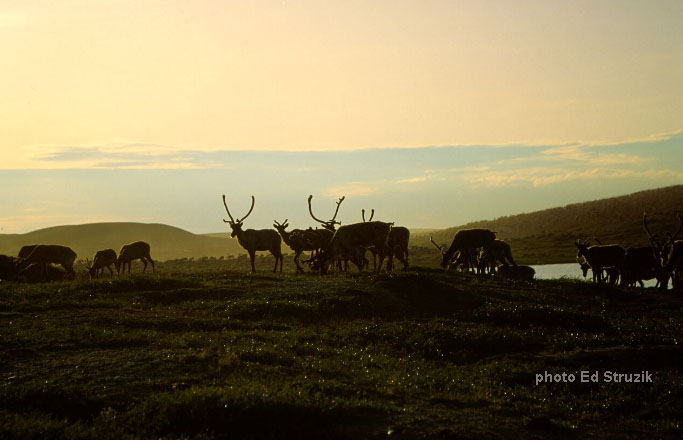
Our letter to the Coastal Plain Oil and Gas Leasing Program EIS at the U.S. Department of the Interior, Bureau of Land Management
cc: Prime Minister, Minister for Foreign Affairs and the Minister of the Environment and Climate Change
The Canadian Arctic Resources Committee (CARC) is the oldest country-wide citizen’s organization dedicated to environmental sustainability in Canada’s Arctic. We have a long history of advocating on environmental issues and are a vocal supporter of caribou conservation for the central role they play in the Arctic ecosystem and to those who rely on them for food.
Over the last number of years, we have become increasing alarmed at the state of caribou populations throughout North America. As you may know, the Committee on the Status of Wildlife in Canada has now assessed all of our designated Arctic caribou populations and has recommended that they all be considered threatened or endangered. There have been significant and worrying declines in the populations of almost every caribou herd over the last twenty years.
Evidence from both local Indigenous people and scientific studies suggests that most herds have undergone natural fluctuations in numbers in the past but available demographic data indicates no sign of a rapid recovery and the cumulative threats are without historical precedent. Climate change has resulted in a combination of events. These include a decrease in the ability of the animals to access regular food sources, increases in both recreational and commercial shipping throughout Arctic waters and the resultant decrease in sea ice, and an increase in natural resource exploration, development and road building throughout the north. These factors together are creating a situation where it may be difficult for the populations of these animals to rebound.
Maybe most importantly, caribou are the last free wide roaming ungulates of North America. They are so wide ranging that they are often described as a keystone species; a group of animals that play a key ecological and cultural role in northern ecosystems. Moreover, they are of significant cultural and social value to northern Indigenous peoples and an important traditional food source. This is particularly true now, in a time where food security is a serious issue for northern Indigenous people. The key is to keep development away from critical caribou habitat. Unfortunately, many new resource developments can already be found in caribou calving, post-calving and key migration areas.
You can take action
right now with CPAWS
For decades, CARC has worked to ensure the conservation of the threatened Porcupine caribou population, a herd that I am sure you are aware lives in both Yukon and Alaska. We continue therefore to be a strong proponent for the protection of Alaska’s Arctic National Wildlife Refuge. The Coastal Plain of the Refuge is the spring calving grounds of this herd. As already noted, these animals are not only important in and of themselves and to the health of Arctic ecosystems but are critical to the culture and subsistence ways of life of Indigenous peoples across northern Canada and Alaska. This is so much so that the Gwich’in and other Indigenous peoples have located their communities strategically along the herd’s migration route.
We are aware that the U.S. Bureau of Land Management Alaska State Office is now preparing an Environmental Impact Statement (EIS) to implement an oil and gas leasing program within the Arctic National Wildlife Refuge Coastal Plain, an area of approximately 1.6 million acres within the Refuge. We further understand that the Coastal Plain Oil and Gas Leasing EIS includes a requirement to hold no fewer than two lease sales area-wide and may also inform post-lease activities, including seismic and drilling exploration, development, and transportation of oil and gas in and from the Coastal Plain. We are also aware that the Leasing EIS will consider and analyze the potential environmental impacts of various leasing alternatives and that this will include the areas to offer for sale and the terms and conditions (lease stipulations and best management practices) to be applied to leases and associated oil and gas activities. We understand that this is done to balance oil and gas development with existing uses and conservation of surface resources and to limit the footprint of production and support facilities on Federal lands to no more than 2,000 surface acres.
We commend you for the wise protection that you have provided Arctic National Wildlife Refuge over the last several decades. For the reasons described above, all supported and recognized by your government in the past, we strongly encourage you to continue to not allow any oil and gas development within the Refuge. The importance of this area transcends borders. Few places on Earth are as wild and intact.
We further ask that you seriously consider Canadian interests within your deliberations over the future of the Refuge. We believe that oil and gas extraction have no place there and anticipate that a sound and evidence-based process will come to the same conclusion. Disturbing this landscape will have a disastrous effect on the health of Porcupine caribou herd and the Gwich’in people and communities that rely on them for their livelihood. Please don’t let this happen.
*Photo above from CARC archives, not necessarily porcupine caribou
